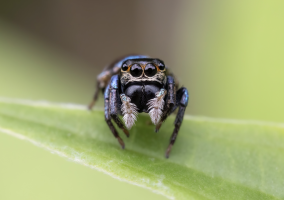By reading you, I guess you didn't like the "Touch and Drag AF" function of the M6 Mark II. To my sense it's as fast and efficient as a joystick, but to each his own, of course.
No, I didn't

as I don't use touch screens on cameras; the M6II was the only camera (apart from GoPro, and mobile phone of course, for obvious reasons) where I had to leave the touch enabled and used it. Otherwise, touch screen is the first function I entirely disable in a new camera when setting it up, it's just a thing that for me is a total no-go.
I have the function to enable the touch, in the fast menu, (the green menu, I don't know the exact name of it) only on the R10 for a simple reason, the aperture control: on my R10 the aperture is on the control ring on the RF lenses, or on the RF-EF adapter, then the iso and the shutter are the same way I have them on R6 (front dial shutter, top dial iso, while aperture on R6 is carried on by the back dial, that R10 doensn't have).
I have two RF-EF adapters, but just one with the control ring, that I use on R10 while the std one is for the R6; but if I find myself in a wedding with inadvertently the std adapter on the R10, and I MUST take the picture immediately because something happens, but also need to change aperture, and have no time to switch adapter/lens, I have no way of fast changing aperture.
Not in the menu, not on other other dials without reconfiguring them and that costs time, not even pressing the ISO button (that can NOT be reconfigured to change aperture, as the iso are already on the top dial; in fact my ISO button is configured to open white balance menu), there's no single button on R10 that can be configured to change aperture value, you can only assign it to a dial!
And so in emergency the only way to change that aperture fast enough is enabling the touch screen from the green menu, which pops up immediately when I press the menu button, and it's the first voice on top of the menu; and then I have the aperture control on the screen.
But it's just a measure of emergency; other then that, there's no use for a touch screen in my camera handling workflow.

